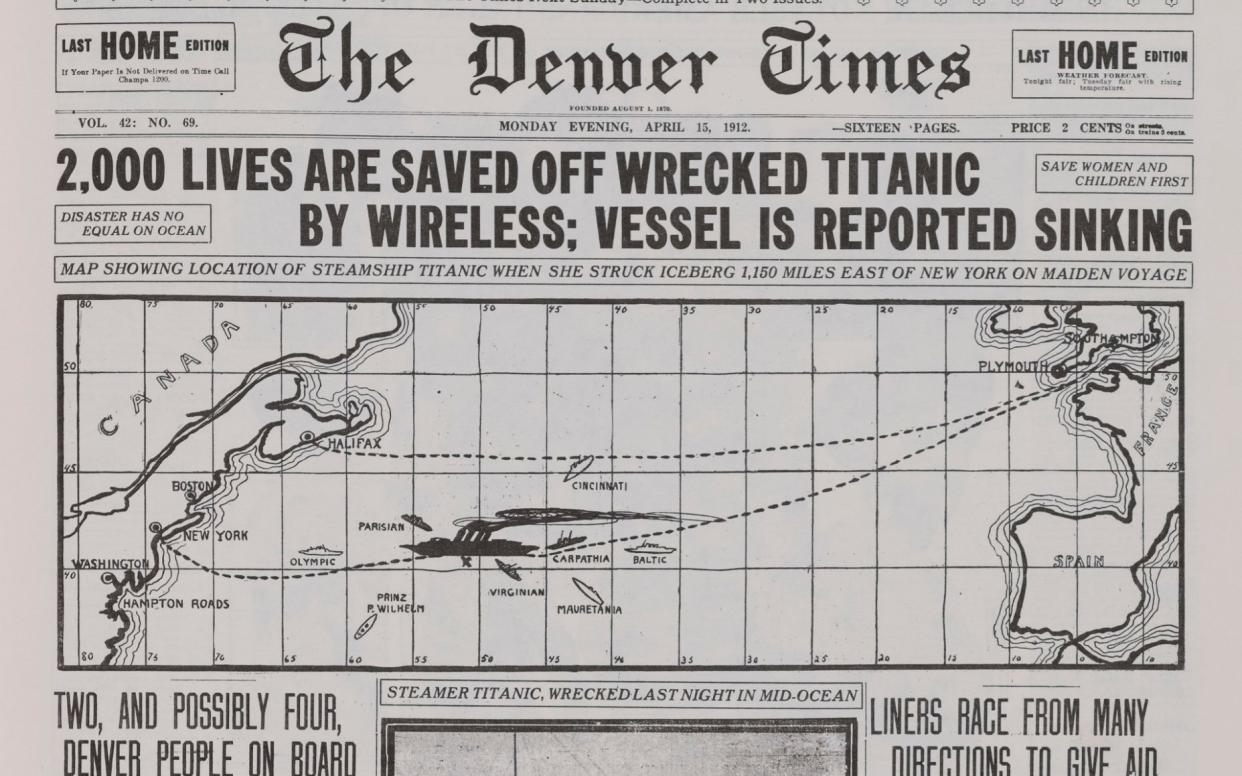So, fake news is new? Think again

On April 15 1912, the Brooklyn Eagle reported the sinking of the Titanic with the headline: “ALL BELIEVED TO BE SAFE.” Citing various reports, it said the great liner had merely been damaged, and that its passengers were expected in Halifax soon.
For the Denver Times, it was a story about the triumph of new technology – a “thrilling chapter in the history of [the] Marconi system”, which had allowed other ships to flock to the sinking ship’s rescue.
But that same technology had hoodwinked reporters. In the confusion following Titanic’s disappearance, with no word from the ship itself, they had seized on unsigned radio messages that claimed there was “no danger of loss of life”. But the Titanic was not silent merely because, as the Times believed, its wireless was “working badly”. It was silent because it had sunk, with the loss of 1,500 lives.
These two front pages are among the first sights in a new exhibition on fake news at the National Science and Media Museum in Bradford. Rapidly assembled to ride the wave of controversy still rippling out from the 2016 US election, it is a small but well-chosen collection of objects and images attempting to fathom this elusive phenomenon and show how it comes about.

In doing so it avoids two common pitfalls of discussion about fake news. The first is to depict it as something unprecedented, arising purely from the internet age. The second is to locate it “outside” the mainstream, in the badlands of social media and obviously unscrupulous websites. Too often fake news is framed as an upstart threat to the old, reliable order – rather than something that has been with us for centuries, lurking at the heart of writing itself.
So yes, you can see racks of mobile phones automatically sharing content in a Chinese “click farm”, or watch the (still funny) press conference in which a White House official insisted Donald Trump’s inauguration crowd had been bigger than Barack Obama’s. But you can also see the Kodak cameras which Elsie Wright and Frances Griffiths used in 1917 to make the Cottingley Fairies go viral – as well as the sad, fascinating letter Elsie wrote in 1983 explaining why she faked them.
And yes, there is a panel on the Macedonian town of Veles, whose local economy was briefly taken over by teenagers writing pro-Trump clickbait. But there are also newspapers covering Jeremy Corbyn’s alleged failure to bow during the state opening of Parliament this year (he was not required to), and a mid-century photo doctoring kit used by the Daily Herald to make a bus drivers’ strike look bigger and paste a new background into a picture of two children. It is a good mix of infamous examples and obscure surprises.
These objects capture the diversity of fake news. There are journalists, politicians, charlatans and ordinary members of the public; they do it for fun, for a good story, for political propaganda or simply by accident as they innocently attempt to pin down unclear facts.

The explanatory panels touch only briefly on the psychology and economics – on how we seek media that tells us what we want to hear, and the incentives that gives publishers. But they do encourage visitors, without indulging in false equivalence, to think about how all news is in some way edited and manipulated. “People make decisions about every aspect of how news is presented to us,” one observes. “Can there ever be a faithful representation of what happened?”
The collection is constrained by its small size and quick gestation. Its curator, John O’Shea, told me most such exhibits take 18 months; this one took four. The idea came from the night of the Manchester bombing, which he spent on social media trying to sift truth from rumour – but there is neither the time nor the space to really do justice to that sense of disorientation and chaos, which seems at times to have consumed our entire political system. The show is firmer when it has tangible historical artefacts to show you than grasping at the present, where so much evidence is, O’Shea says, floating in the cloud or locked in Facebook’s commercially sensitive info-vaults.
That’s understandable: this is only the second or third draft of history, on a topic whose facts are evolving and unsettled. It’s still possible that in time we will laugh at what we currently think we know about fake news.
National Science and Media Museum, Bradford Until Jan 28. Details: scienceandmediamuseum.org.uk
